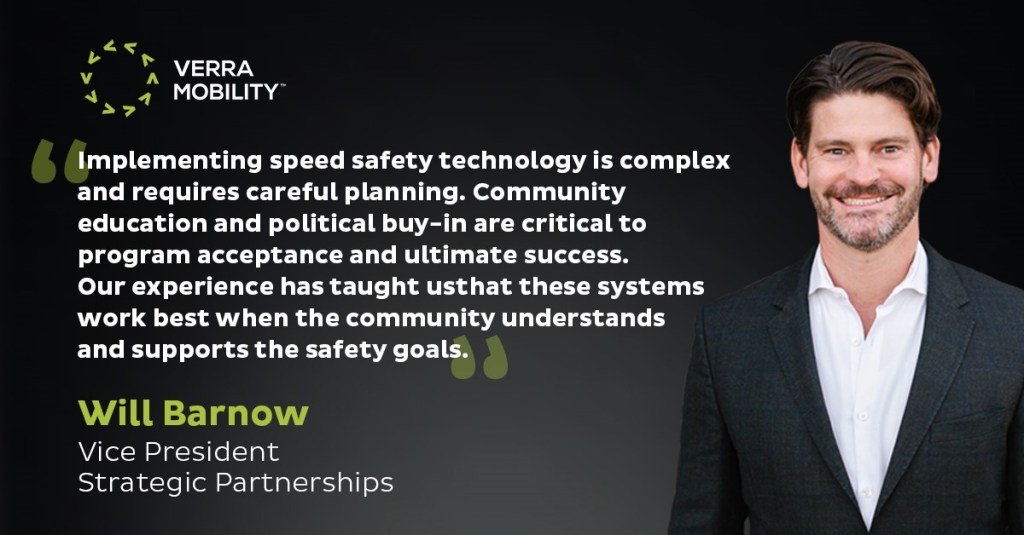
Data-Driven Safety: Inside San Francisco’s New Speed Camera Initiative
May 15, 2025
We’re a Certified Great Place to Work for a fourth year
May 22, 2025

Verra Mobility is proud to have participated in the recent panel discussion on “How to Curb Pedestrian Fatalities – Understanding Speed Safety Systems” at the California League of Cities Public Works Officers Institute.
Our VP of Strategic Relationships, Will Barnow, joined experts from UCLA Institute of Transportation Studies and Marinship Development to discuss how innovative speed safety technology can help reduce the alarming rise in pedestrian fatalities across California. “Implementing speed safety technology is complex and requires careful planning,” said Barnow. “Community education and political buy-in are critical to program acceptance and ultimate success. Our experience has taught us that these systems work best when the community understands and supports the safety goals.”
During the engaging discussion, panelists shared valuable insights on the effectiveness of automated enforcement approaches. Juan Matute from UCLA Institute of Transportation Studies explained: “What the Automated Speed Enforcement System does is it increases the probability of enforcement to near one. So people will adjust their behavior, as has been the case in cities like New York and Chicago where it’s been introduced already.”
Key takeaways from the session:
- Speed enforcement technologies have proven highly effective in reducing speeding and saving lives, with data showing up to 94% reduction in speeding in camera-enforced corridors
- Successful implementation requires thoughtful planning, community engagement, and integration with existing traffic safety initiatives
- AB 645’s pilot program represents a significant opportunity for California cities to enhance pedestrian safety
We’re thrilled to be partnering with San Francisco on California’s first speed safety camera program and look forward to working with other pilot cities to implement effective, equitable speed safety solutions.
At Verra Mobility, we remain committed to our mission of making transportation safer and easier by partnering with local communities to protect lives, improve urban mobility, and support healthier communities.

